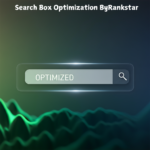Software bugs can be a nightmare for developers and users alike. Bug Ralbel28.2.5 stands out as a particularly frustrating issue, responsible for crashes, degraded performance, and inconsistent system behavior. Whether you’re managing a large system or troubleshooting as an independent developer, this guide will take you step-by-step through identifying, how to fix bug Ralbel28.2.5, and preventing this bug while offering expert insights along the way.
What Is Bug Ralbel28.2.5?
Bug Ralbel28.2.5 is a version-specific problem that causes performance degradation and crashes in affected systems. This bug is usually tied to configuration conflicts, memory mismanagement, or dependency mismatches introduced during the update to version 28.2.5. While the symptoms vary, the underlying patterns reveal similarities that help pinpoint and resolve the issue.
Key Takeaways:
- Issue Identification: Users face error messages, freezes, or system crashes in association with version 28.2.5.
- Triggers: Often caused by dependency conflicts, configuration mismatches, or installation errors.
- Impact: Performance halts, unresponsive applications, and a potentially significant loss of productivity.
Understanding these aspects will lay the groundwork to effectively address the bug and prevent future issues.
Common Symptoms and Root Causes
Symptoms
Users encountering this bug often report:
- Frequent Crashes: Applications or processes randomly stop working.
- Lagging Performance: Slow response times when operating the system.
- Error Messages: Specific references to “Ralbel28.2.5” appear in logs or UI alerts.
- Unresponsive Features: Certain functionalities fail entirely, often without consistent patterns.
Root Causes
Fixing this bug requires understanding why it occurs. Common causes include:
- Misconfigured Settings: Incorrect or outdated configuration files.
- Memory Management Problems: Memory leaks or corruption in the system.
- Dependency Mismatches: Conflicts between libraries and modules.
- Partial or Faulty Installations: Corrupted files during installation or updates.
With these factors in mind, you can better approach troubleshooting.
Step-by-Step Fix for Bug Ralbel28.2.5
Step 1: Identify and Isolate the Problem
- Check Logs:
Use system logging tools (e.g., ELK Stack or Syslog) to identify where the issue arises. Look for keywords like “Ralbel28.2.5” in error logs.
- Recreate the Bug:
Reproduce the issue in a staging environment or debug mode to observe its behavior firsthand. This allows you to confirm the exact conditions triggering it.
- Expert Tip: “A good logging system is your best friend in identifying repeating patterns of errors,” says Lisa Harford, Senior Engineer at CloudSync.
Step 2: Review Configuration and Dependencies
- Configuration Verification:
Ensure all configuration files reflect the latest standards. Look for mismatches, missing values, or outdated settings.
- Dependency Check:
Use tools like `npm audit` or `pip check` (depending on your system) to detect incompatible or outdated libraries.
Pro Insight: Dependency mismatches are a leading cause of issues post-update. Keep a changelog to track dependency versions.
- Documentation Review:
Study the release notes for version 28.2.5, which often document known issues and suggested fixes.
Step 3: Clear Caches and Temporary Files
- Delete Cache Files:
Temporary files can interfere with software updates, leading to lingering issues. Clear them using system tools or scripts specific to your environment.
- Restart the System:
After clearing cached data, restart the affected application or system to confirm if the issue persists.
“Often, old cached files gum up the system in unpredictable ways. Don’t underestimate the power of hitting the reset button,” notes Marcus Lin, a DevOps Specialist.
Step 4: Apply the Appropriate Patch
- Official Patches:
Download and install the official patch provided by the software vendor for version 28.2.5.
- Manual Adjustments:
If no patch is available, inspect the affected files. Some users report success after modifying driver files associated with memory allocation.
Example:
“`c
// Example adjustment in code:
driver_ptr->allocate_memory = fixed_allocation_function;
“`
- Reinstall Software:
If manual fixes fail, reinstall the software, ensuring no files from old builds interfere with the new deployment.
Step 5: Test and Validate
- Perform Extensive Testing:
Use tools like Selenium or Appium for automated functional tests and stress testing.
- Monitor Logs:
After applying the fixes, continue monitoring logs to confirm no further occurrences of the bug.
- User Feedback:
Gather insights from end-users to understand if the fix resolves their issues without introducing new ones.
How to Prevent Future Bug Occurrences
Fixing the bug is one thing—preventing similar future incidents is another. Implement the following best practices to keep your systems running smoothly:
- Automated Regression Testing:
Set up pipelines that automatically test new updates and patches.
- Timely Updates:
Regularly upgrade to the latest software versions, as these often resolve known vulnerabilities.
- Continuous Monitoring:
Use platforms like Datadog or Splunk to catch early signs of performance degradation.
- Documentation Practices:
Always document your fixes and updates to aid future troubleshooting.
Expert Quote: “Prevention is a long-term investment—automating your testing and logs will save hours of future downtime,” explains Diana Roth, VP of Engineering at TechAxis.
Frequently Asked Questions (FAQs)
1. What is bug Ralbel28.2.5?
Bug Ralbel28.2.5 is a version-specific issue related to software performance degradation, crashes, and unresponsive processes caused by configuration or dependency conflicts.
2. How can I identify if my system is affected?
Look for error messages or crashes referencing “Ralbel28.2.5,” slow performance, or intermittent feature failures in your system logs.
3. Are manual patches safe to apply?
Manual patches can work but should only be applied after careful testing in a controlled environment. Always back up your data before making changes.
4. What tools can help in fixing this bug?
Tools like ELK Stack for log analysis, automated testing tools like Jenkins, and dependency managers like npm or pip are invaluable.
5. How do I avoid similar bugs in the future?
Implement continuous integration, automated regression tests, and regular software updates to prevent future issues.
Building Stronger, Bug-Free Systems
Addressing bug Ralbel28.2.5 requires a strategic and systematic approach, but the effort paves the way for more robust and dependable systems. By isolating the issue, making necessary patches, and adhering to preventive measures, you’re not just solving a problem—you’re building infrastructure that can withstand future challenges.
Take a proactive approach. Monitor your systems regularly, document changes, and empower your team with tools designed for seamless debugging and system monitoring.
Feeling stuck? Don’t hesitate to consult experts or technical resources to refine your process for fixing challenging software bugs!



